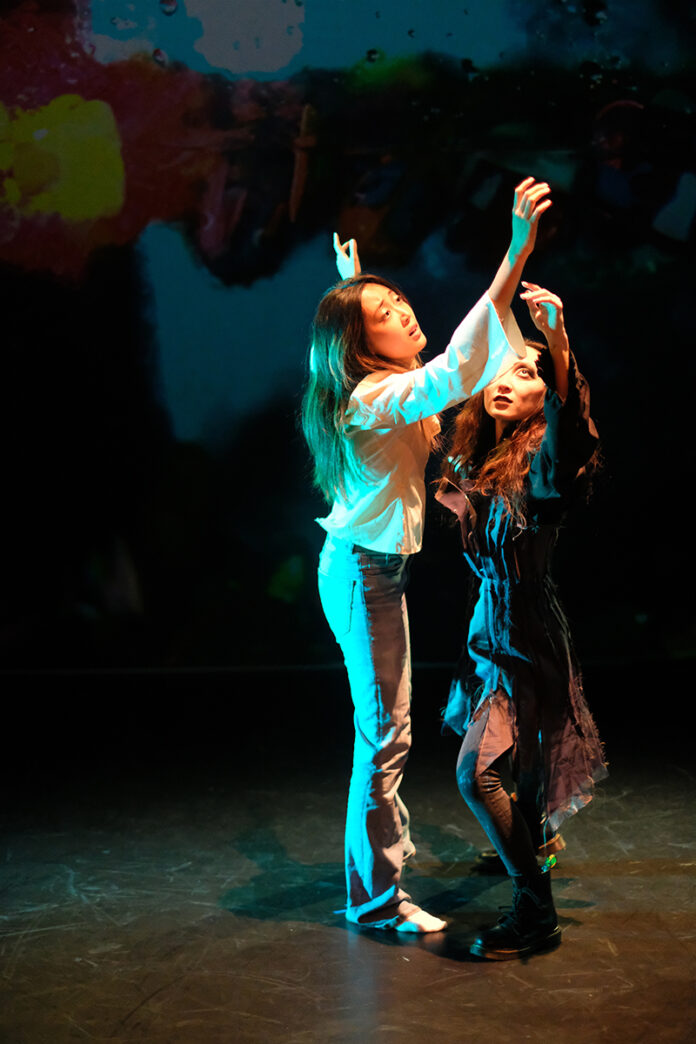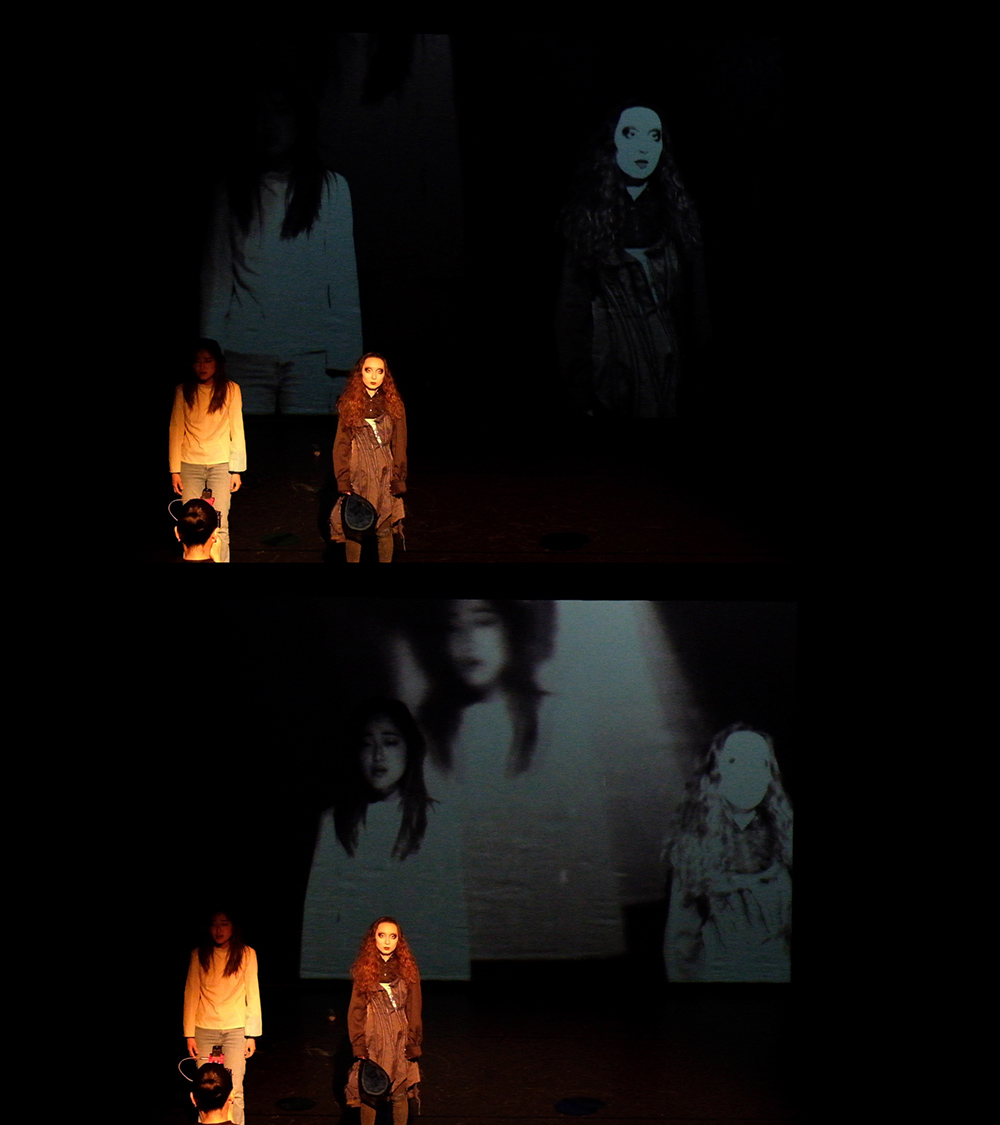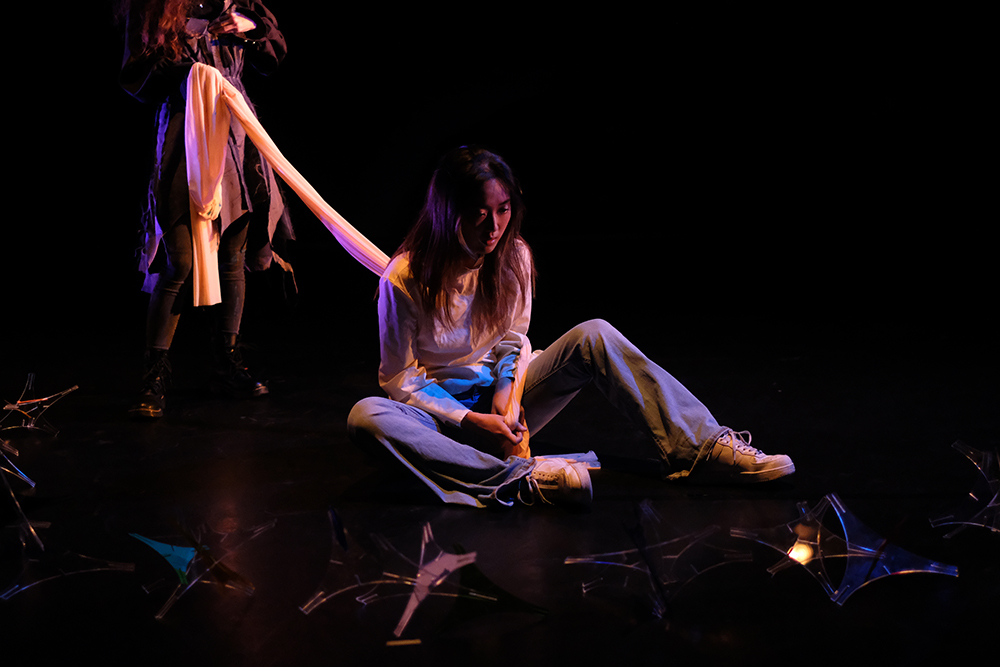Some shows demand your attention. And Tonight No One Descends doesn’t. It just appears — like a feeling you’ve had before but never quite found the words for.
The newest project from Prickly Ash Theatre, a collective led by Chinese female designers with a gift for turning feeling into form, And Tonight No One Descends is less about plot and more about sensation. A 60-minute climb through trauma, identity, and the performance of pain, the play moves in quiet, haunted circles — never trying to resolve what it can simply let hang in the air.
It opens simply: someone enters an abandoned building, with no clear reason why. As they ascend floor by floor, surreal scenes begin to unfold, each one reflecting some psychological knot — childlike hope, arrested anxiety, self-sabotage dressed up as power. There’s a stranger, too, waiting in the shadows. They collect X-ray vinyls, believing the more broken and distorted the image, the more valuable it becomes.
It’s a metaphor, of course, but the show never rubs your nose in it. It lets it sit — odd, shimmering, uncomfortable.
Jasmin Yumin Li directs with a featherlight touch, focusing on physical theatre and behavioral rhythm more than visual language. Her dramaturgical approach draws from body-based performance and movement improvisation, allowing the piece to unfold like breath — inhale, exhale, descent, stillness.
The two performers, Mary Emma He and Alina Zhou, embody two contrasting facets of a single character’s psyche. A (played by Mary) reflects performative optimism, while B (Alina) expresses a desire for self-erasure. Their presence on stage becomes a delicate, embodied dialogue between survival and surrender — a fractured, entangled psyche attempting to reconcile its contradictions. Their movements drift apart, then draw close again, like tides within the same body. In silence, they communicate volumes. You begin to feel as if you’re eavesdropping on someone’s internal monologue — private, unfinished, raw. Each gesture reveals a different facet of the self: as a presence, as a memory, as something just on the edge of language.
But what really gives And Tonight No One Descends its staying power is how lovingly it’s been built. This is a designer-led piece in every sense of the word. Inini Xinyi Yin, who serves as both Creative Producer and Video Designer, fills the space with strange, flickering visuals that feel pulled from old Tumblr archives and digital ghost stories. Think VHS static, glitchy dreamscapes, fragments of memory looping on repeat.
Ruolin Lei’s set design doesn’t try to dazzle — it hums, quietly, unsettlingly. There are no grand reveals, no clunky scene changes. Just space, shifting as the characters do.
Xinyi Huang, who wrote the script and designed the costumes, leans into a Jirai Kei aesthetic — ruffled edges, soft chaos, vulnerability that’s styled but never inauthentic. The characters wear their pain like fabric, stitched and fraying in all the right places.
Lighting by Yuqing Wang flickers between soft melancholy and clinical brightness, sometimes disappearing altogether. Her work never screams for attention — it lets shadow and silence do the talking. And behind the scenes, Hongrui Yao keeps the world spinning as Stage Manager, …with behind-the-scenes support from producers and stage management – including Haoming Li, Jingwen Lu, and Tianhui Fu – who helped hold the framework steady while allowing the piece to breathe and evolve from within. And yet, for all the technical precision, the show doesn’t feel polished in the glossy, overproduced sense. It feels lived in. You can sense the hours spent by Jieming Lan, Yuxin Lin, and others behind the seams, quietly shaping something that’s both fragile and fearless.
What the play captures — beautifully, achingly — is that specific kind of emotional murkiness where trauma meets performance. It explores what happens when pain becomes identity, when suffering is curated for validation, and when letting go feels more terrifying than holding on.
There’s no catharsis, no moral-of-the-story. Just a slow, thoughtful climb to somewhere uncertain. And maybe that’s the point. Sometimes, surviving is the story.
By the end, you’re not entirely sure what’s changed — but something has. And it stays with you.
At times, the timing of a blue blood-pack prop slightly undercut the visual atmosphere, with premature leaks catching light too early. It’s a minor production wrinkle – but one that reveals how tightly the show’s sensory world is choreographed.



